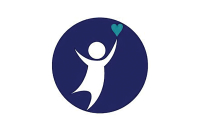Status of the pay gap

The Equal Pay Act, which mandates equal pay for equal work and forbids employers from paying men and women different wages or different benefits for doing jobs that require the same skills and responsibilities, was signed into law in 1963.
This was one of the first laws in American history intended to reduce gender discrimination in the workplace. When it was signed into law, President John F. Kennedy acknowledged “much remains to be done to achieve full equality of economic opportunity for women.”
Fifty-seven years later women earn, on average, 82 cents for every dollar earned by their male counterparts, according to the latest U.S. Census data from 2018.
Within that statistic lies a wide range of compensation. On average, Black women earn 62 cents to the dollar compared to white men, Hispanic/Latinx women earn 54 cents, Asian women 90 cents, and Native Americans 57 cents.
Dr. Dana Patterson, director of the Department of Intercultural Affairs at Western North Carolina University, said she believes there are a lot of preconceived notions about what the head of a household looks like, and that this contributes to the pay gap.
“That goes into our whole gender identity and hegemonic masculinity beliefs about what men should have, and what women should be doing and the role they should play in a family. But if we look at recent research and we look at especially Black and Latino families, people will find that women are more and more heading households. So that expectation that women are not in the role of heading households is kind of an assumption that we’re socialized to believe” she said.
Related Items
Wage gap calculations by the Census Bureau show the ratio of earnings for men and women across all industries, not specific, identical work. This is important to help capture the multitude of factors driving the gender wage gap. Some of these factors include differences in industries, differences in years worked, difference in education levels and differences in hours worked, but also blatant discrimination.
“It is important to note that many of these factors can be directly and indirectly influenced by discrimination based on gender and race or ethnicity,” said Robin Bleiweis at the Center for American Progress. “For example, societal and structural sexism often influences the jobs that women work in, and those same forces mean that women most often take on the majority of the caregiving, housework and other unpaid responsibilities that men do not.”
Patterson says she believes the gap still persists, not because people believe women should be paid less than men, but because in a fast-paced world, people are constantly distracted from the issue.
“We’re going to have to address our own gender bias, and what we think about men and women. It even comes down to what we’re seeing right now with the whole Black Lives Matter Movement. To me, it really bears a striking similarity in terms of understanding the phenomenon. It’s like, all work matters, but you have to say right now women’s work matters. You have to elevate that voice and elevate that platform because it’s not being addressed, and because it hasn’t reached a state where real sustainable change is being made in that degree.”
The United Nations Foundation projects that the Coronavirus Pandemic and the ensuing economic fallout will only exacerbate the gender pay gap. According to a UN report, women have seen the majority of employment loss during the pandemic due to their holding the majority of insecure, informal and lower paying jobs.
“I think that a lot of the government policies that have been put in place are looking at more of an equality framework and not an equity framework,” said Patterson. “There were a lot of people who were ‘not haves’ even before a lot of us became ‘not haves’. So, we still have more than the people who were ‘not haves’ before this pandemic happened and before this economic crisis happened. So, if things were to be equitable, then people who had less to begin with would get more support right now. But instead there’s this blanket policy and everyone’s going to get the same thing.”









